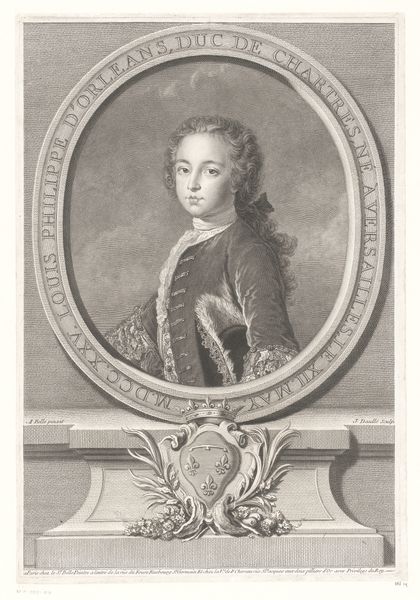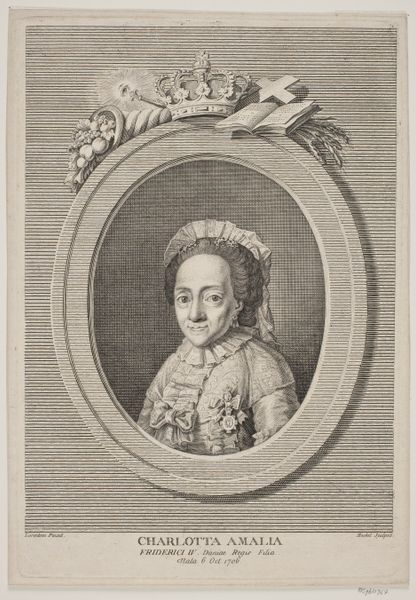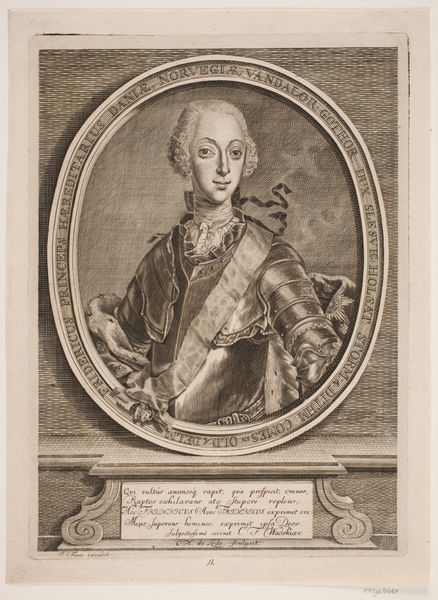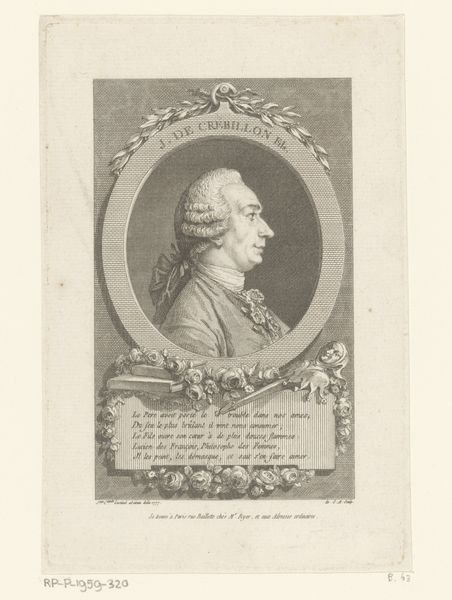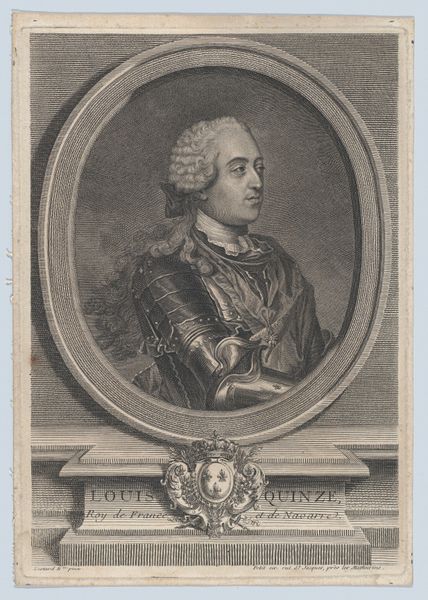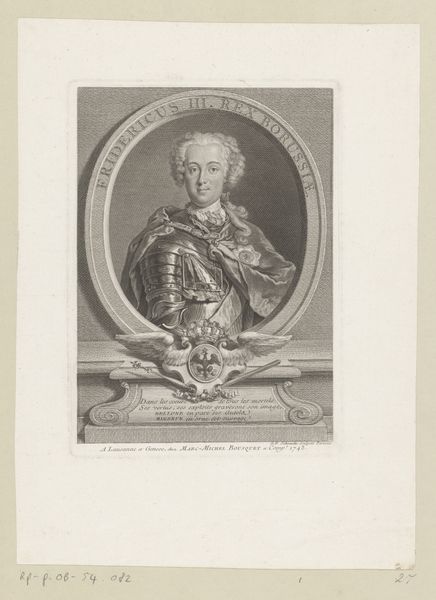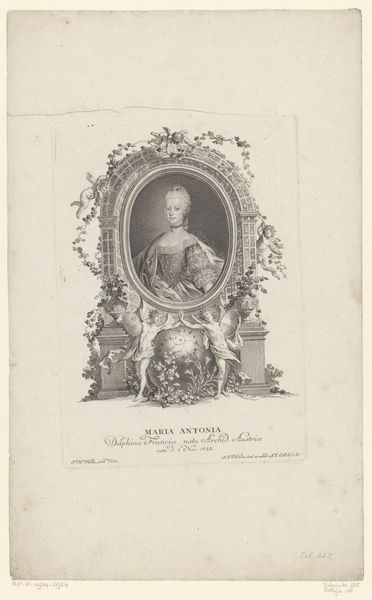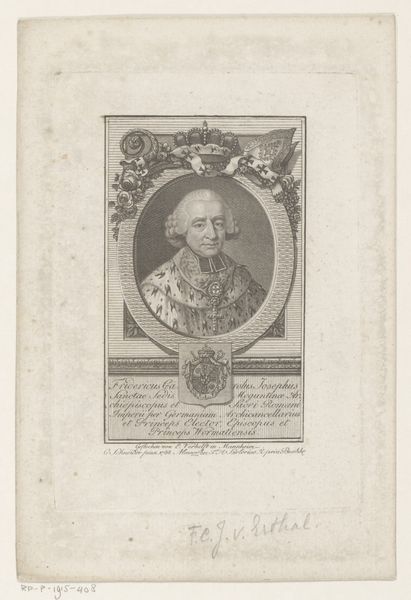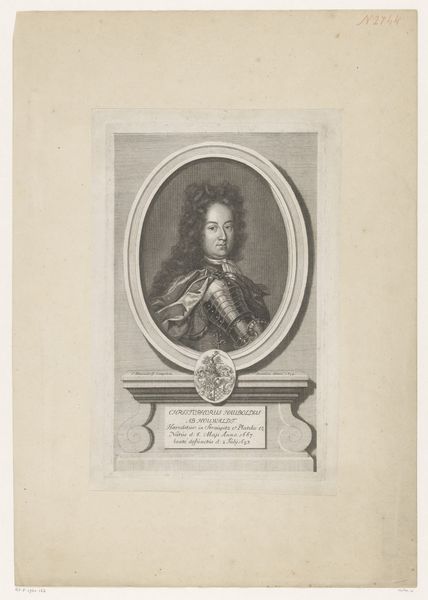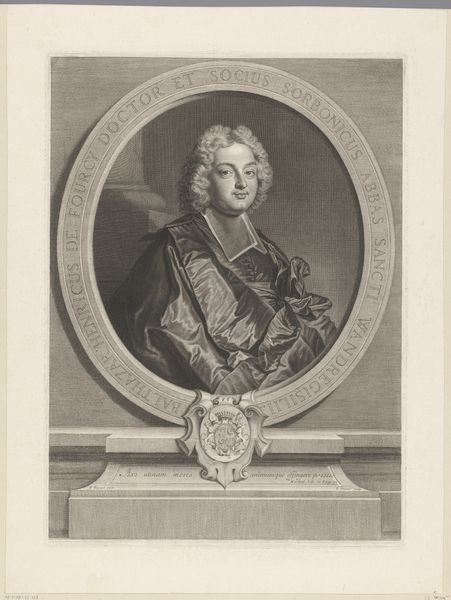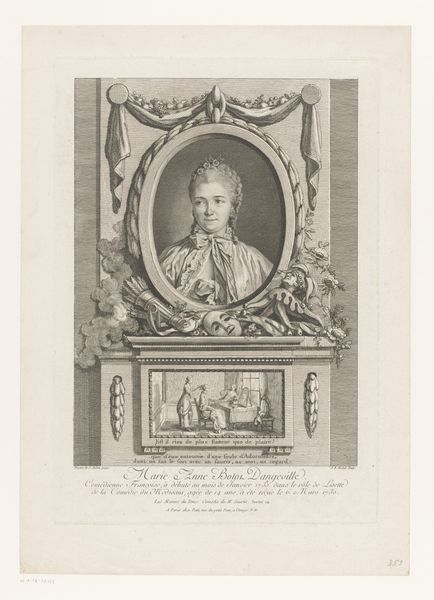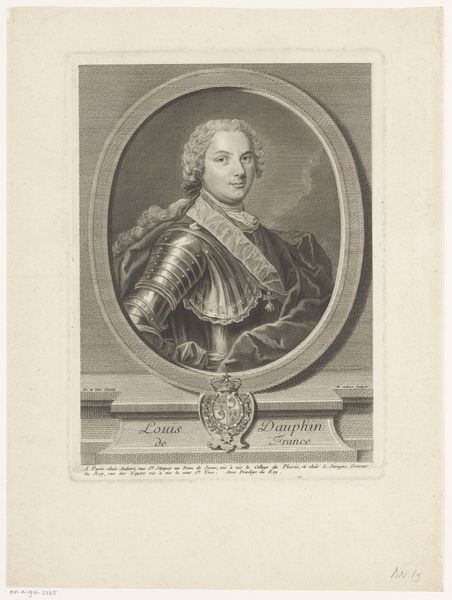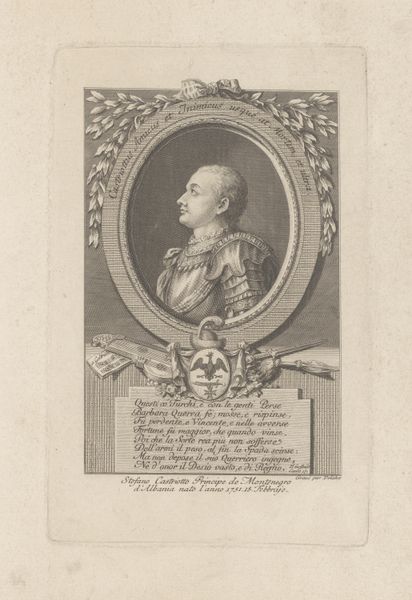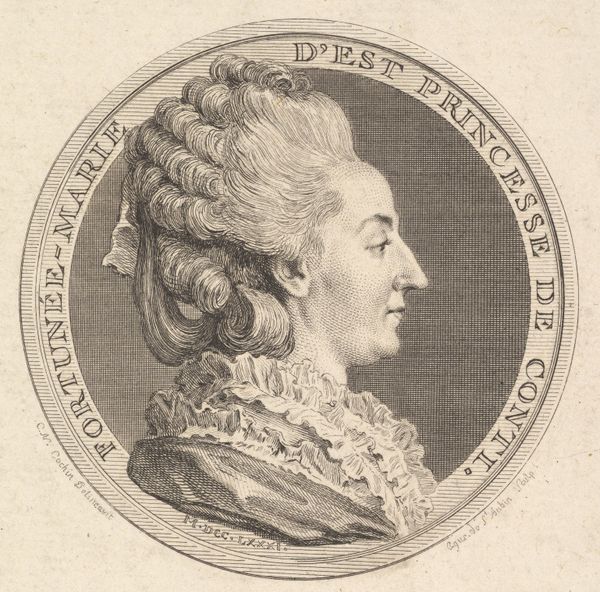
Dimensions: height 179 mm, width 130 mm
Copyright: Rijks Museum: Open Domain
Curator: This is a rather charming engraving, wouldn't you say? The Rijksmuseum holds this impression, titled "Portret van Marguerite Lecomte." It comes to us from Louis Simon Lempereur, likely done somewhere between 1738 and 1807, if we're to take the artwork date as an indication of the artist's active life. Editor: Oh, absolutely, it's delightful! It has this wonderful Rococo fluffiness to it, like a sugared almond. So precise and contained, but the expression is so very human. A slight, knowing smile, perhaps? And a very powdered bouffant hairstyle, if I'm not mistaken. Curator: You're spot on! And how perceptive of you to notice that. Indeed, the subject, Marguerite, appears surrounded by elements which speak to the context of this Baroque portraiture. See how the floral garlands evoke not only beauty but perhaps fertility and renewal. Editor: It is striking. The circular frame is full of detail, it gives an effect of inclusion as well as confinement; while the garland creates this sense of controlled natural order. It's as if they’re saying, "We acknowledge nature’s beauty, but let’s organize it, thank you very much.” And the bow right on top - almost feels like it wants to contain all this excess. Curator: It speaks volumes about the sensibilities of the age. The inscription below, in French, praises her virtues – her talent, good heart, and lively spirit—which seem to be further encoded via emblems within the design. What you point out shows perfectly how the print tries to "freeze" her very likeness for the posterity. Editor: Absolutely. There's this quest to pin her down, to capture the uncapturable. Like trying to net a butterfly with the finest lace. I wonder what she thought of all this fuss? Did she see herself in this idealized version, or did it feel like wearing someone else's idea of herself? Curator: An excellent question! This piece makes you consider how portraiture reflects both the subject and the artist, their relationship, and also the culture in which it was created. I think it reveals how carefully curated our own projections can be, even in the age of the unfiltered selfie. Editor: Exactly! And it makes you appreciate the hand that creates the illusion, giving an age and a cultural lens back to the modern viewer. There’s an elegance and wit here that endures, long after the powdered wigs have faded away. It reminds us of how, sometimes, constraints can actually give way to beauty.
Comments
No comments
Be the first to comment and join the conversation on the ultimate creative platform.
